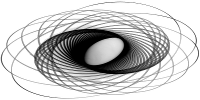S. Liu, R. R. Martin, F. C. Langbein, P. L. Rosin. Segmenting Reliefs on Triangle Meshes. In: Proc. ACM Symp. Solid and Physical Modeling, pp. 7-16, 2006. [DOI:10.1145/1128888.1128890] [PDF]
Sculptural reliefs are widely used in various industries for purposes such as applying brands to packaging and decorating porcelain. In order to easily apply reliefs to CAD models, it is often desirable to reverse-engineer previously designed and manufactured reliefs. 3D scanners can generate triangle meshes from objects with reliefs; however, previous mesh segmentation work has not considered the particular problem of separation of reliefs from background. We consider here the specific case of segmenting a simple relief delimited by a single outer contour, which lies on a smooth, slowly varying background. Generally, such reliefs meet the surrounding surface in a small step, enabling us to devise a specific method for such relief segmentation. We find the boundary between the background and the relief using an adaptive snake. It starts at a simple user-drawn contour, and is driven inwards by a collapsing force until it matches the relief’s boundary. Our method is insensitive to the choice of the initial contour. The snake’s limiting position is controlled by a feature energy term designed to find a step. A refinement strategy is then used to drive the snake into concavities of the relief contour. We demonstrate operation of our algorithm using real scanned models with different relief contour shapes and triangle meshes with different resolutions.
![]() This work is licensed under a Creative Commons Attribution-NonCommercial-ShareAlike 4.0 International License.
This work is licensed under a Creative Commons Attribution-NonCommercial-ShareAlike 4.0 International License.

